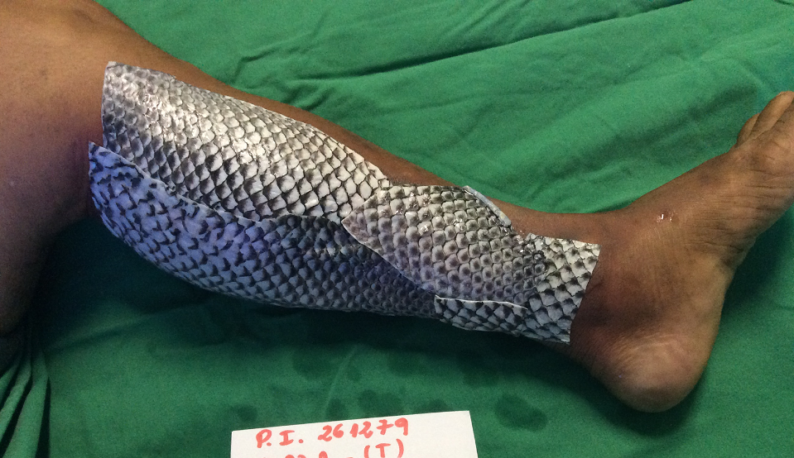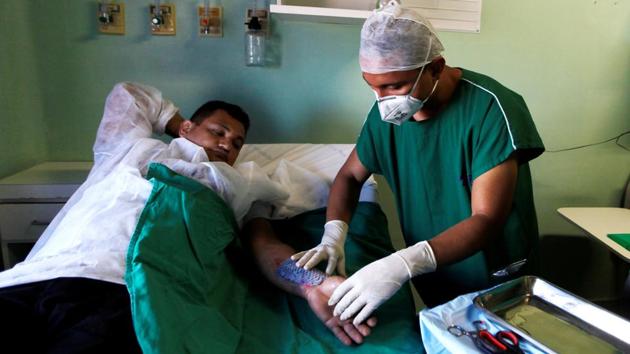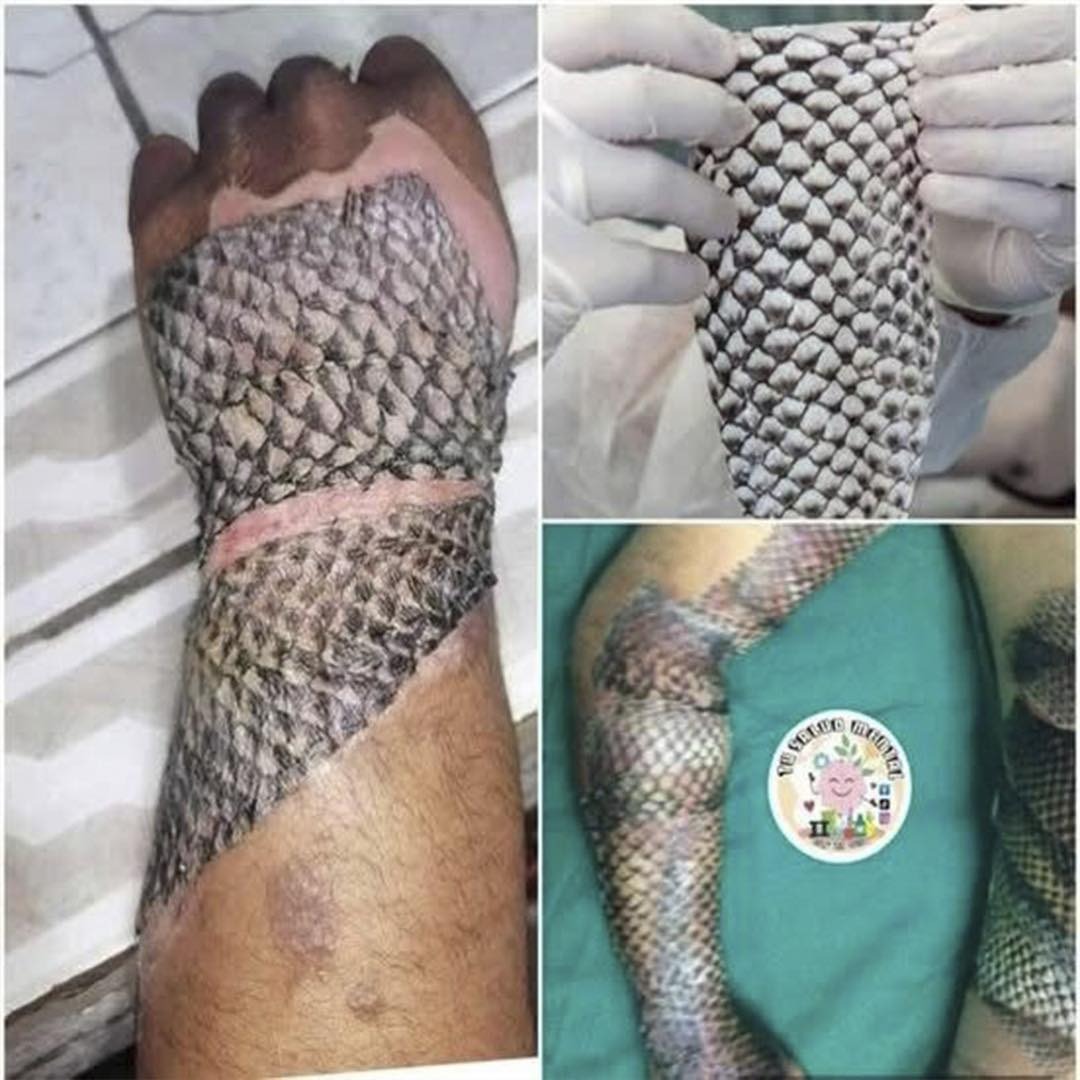Disclaimer: This article is for informational and educational purposes only. It is not intended to replace professional medical advice, diagnosis, or treatment. Always consult a qualified healthcare provider regarding any medical condition or treatment options.
Tilapia Skin: A Sustainable Innovation Transforming Burn Recovery
Medical innovation often emerges from the most unexpected places — not always from high-tech laboratories or expensive equipment, but sometimes from nature itself. One striking example is the use of tilapia fish skin as a biological dressing for burn treatment. Developed by researchers in Brazil, this approach has gained international attention for its affordability, biocompatibility, and clinical effectiveness in supporting skin regeneration.

The Challenge of Burn Treatment
Burn injuries are among the most painful and complex medical conditions to treat. According to the World Health Organization (WHO), an estimated 11 million people worldwide suffer severe burns each year that require medical attention. Traditional treatment often involves autografts (using the patient’s own skin), synthetic dressings, or topical creams to protect wounds, prevent infection, and promote healing.
However, these conventional methods can be costly, painful, and resource-intensive—especially in developing countries, where access to high-quality burn care is limited. This challenge motivated a team of Brazilian researchers to explore an affordable, natural alternative that could make advanced burn treatment more accessible.
The Discovery in Brazil
The pioneering research was led by teams at the Federal University of Ceará (UFC) and the José Frota Institute in Fortaleza, Brazil. The scientists noticed that tilapia, one of the most farmed and consumed fish species in Latin America, had skin that was often discarded as waste. Upon closer study, they found that tilapia skin contained high levels of collagen types I and III — structural proteins vital for human skin repair and regeneration.
Through laboratory testing, researchers confirmed that tilapia skin’s texture, tensile strength, and moisture retention capacity closely resemble that of human skin. These properties make it a promising biological dressing material capable of protecting wounds and promoting healing.
How Tilapia Skin Works in Burn Care
When processed and applied to a burn, tilapia skin acts as a temporary biological bandage. Its role is to:
-
Maintain moisture in the wound, preventing dehydration of the damaged tissue.
-
Provide a protective barrier against bacterial infections.
-
Reduce pain by covering exposed nerve endings.
-
Encourage faster healing by preserving a stable environment for cell regeneration.
According to data published in the Journal of Burn Care & Research, patients treated with sterilized tilapia skin reported less pain and required fewer dressing changes than those receiving conventional gauze and silver sulfadiazine treatments. This not only improves comfort but also reduces hospital workload and medical waste.

Sterilization and Preparation Process
Before clinical use, tilapia skin undergoes strict sterilization and preservation procedures to ensure safety. Researchers first remove scales and muscle residues, then disinfect the skin using sterilizing agents. After that, it is treated with glycerol and stored under controlled conditions to maintain flexibility and prevent microbial contamination.
When needed, doctors apply the skin directly over the burn wound. Unlike standard bandages that require daily replacement, tilapia skin dressings can remain in place for several days, minimizing discomfort and reducing infection risks.
Clinical Results and Patient Outcomes
Clinical trials in Brazilian hospitals have shown encouraging results. Patients treated with tilapia skin experienced:
-
Faster wound healing times, especially in second-degree burns.
-
Reduced pain levels, often eliminating the need for strong pain medication.
-
Fewer complications, such as infections or excessive scarring.
In interviews conducted by the Brazilian Ministry of Health, healthcare professionals noted that tilapia skin dressings significantly improved patients’ recovery experience and emotional well-being. Many patients reported immediate relief after application, describing the treatment as both comfortable and effective.
Cost-Effective and Environmentally Sustainable
One of the greatest advantages of this innovation is its low cost. Because tilapia skin is a byproduct of the fishing industry, it is readily available and inexpensive to process. Studies conducted by the Federal University of Ceará estimated that tilapia skin dressings cost up to 75% less than conventional burn dressings.
This affordability makes it particularly valuable for public healthcare systems in developing regions, where budget constraints often limit access to advanced medical supplies. At the same time, the technique promotes sustainability by repurposing what would otherwise be industrial waste.

Global Interest and Research Expansion
Following Brazil’s success, interest in tilapia skin therapy has spread internationally. Researchers and health institutions in countries such as Mexico, India, China, and Nigeria have begun evaluating its potential applications in local hospitals.
Some ongoing studies are exploring whether tilapia skin could also help treat chronic wounds, diabetic ulcers, and surgical lesions. While further research is necessary to verify these uses, early findings suggest a wide range of possibilities in regenerative medicine.
Safety and Biocompatibility
Ensuring patient safety has been a top priority. Laboratory and clinical tests have shown that sterilized tilapia skin is biocompatible—meaning it does not trigger allergic or immune reactions in the human body. Once the wound has sufficiently healed, the skin can be easily removed without causing pain or damage to the new tissue.
According to studies supported by Brazil’s National Health Surveillance Agency (ANVISA), no significant side effects have been reported when the material is processed correctly under medical standards.
A Human-Centered Innovation
Beyond its clinical effectiveness, tilapia skin treatment carries a profound human and emotional dimension. Burn injuries can cause immense physical and psychological distress. For many patients, especially those from low-income communities, the discovery that a natural, accessible, and effective treatment exists offers a renewed sense of hope.
This innovation demonstrates how science, compassion, and sustainability can work together to transform lives. What was once considered waste has now become a source of healing — a symbolic reminder of how valuable natural resources can be when viewed through the lens of innovation and empathy.
The Future of Burn Care
Tilapia skin therapy represents more than just a medical breakthrough. It signifies a shift toward eco-friendly, affordable, and human-centered healthcare solutions. As more studies validate its safety and long-term outcomes, this treatment could complement existing burn care methods globally.
Experts believe that integrating such sustainable biological dressings into hospital systems could reduce healthcare costs, minimize waste, and improve recovery experiences for millions of patients worldwide.
Conclusion
The use of tilapia skin in burn recovery exemplifies how innovation can emerge from simplicity. Grounded in scientific evidence and driven by social need, this Brazilian discovery has redefined what modern medicine can achieve when it embraces nature’s potential.
With continued research and international collaboration, tilapia skin may soon become a standard part of burn care — not just in Brazil, but across the world. This remarkable approach reflects the core of medical progress: finding solutions that are not only effective but also compassionate, sustainable, and accessible to all.
Sources
-
World Health Organization (WHO): Global Burn Statistics
-
Federal University of Ceará (UFC), Brazil: Tilapia Skin Research Publications
-
Journal of Burn Care & Research: Clinical Studies on Biological Dressings
-
Brazilian Ministry of Health: Reports on Tilapia Skin Use in Public Hospitals
-
ANVISA (Agência Nacional de Vigilância Sanitária): Safety and Biocompatibility Guidelines
